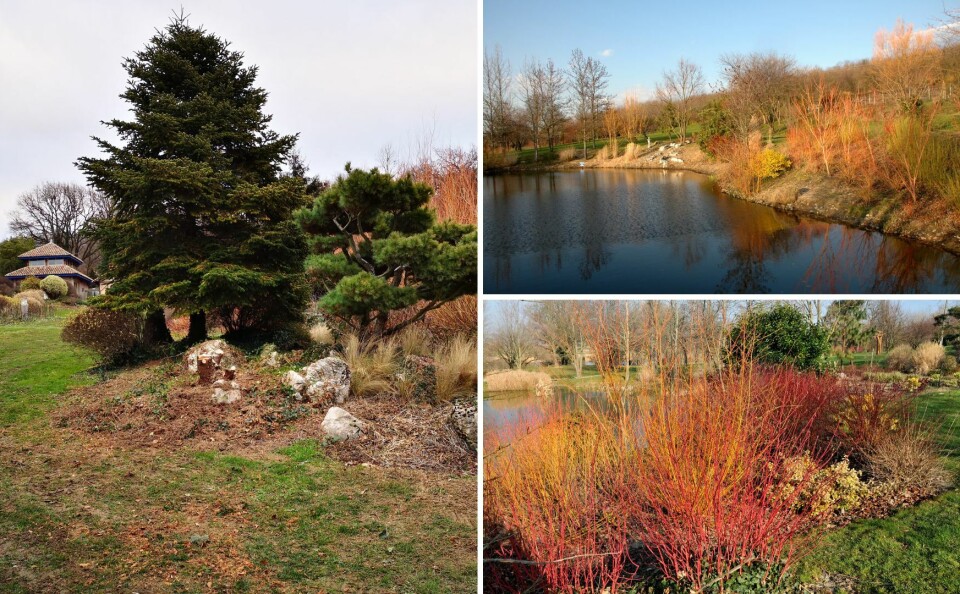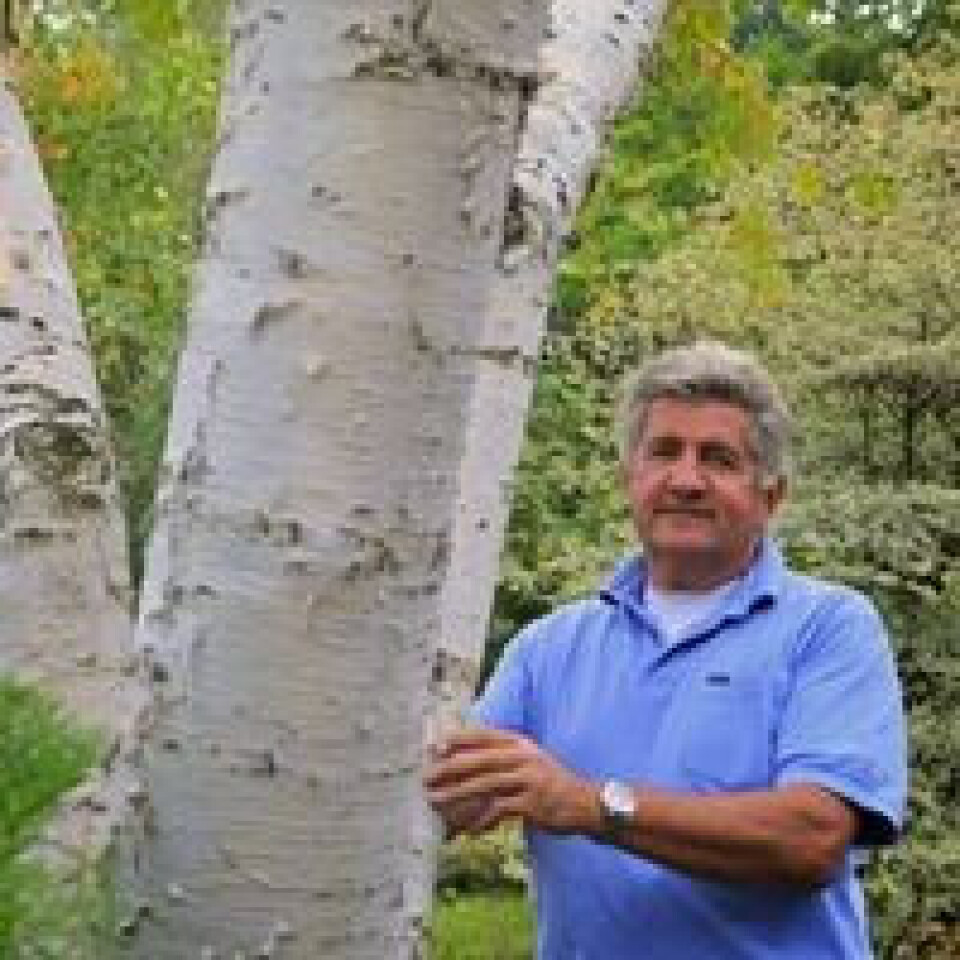-
France’s wild garlic season is here – but foragers should beware toxic lookalikes
Spring brings the fragrant plant to woodlands nationwide. We explain what to look out for
-
Let your lawn grow, water for birds: how to help wildlife in your French garden
‘It is acceptable to have untidy hedgerows,’ says biodiversity spokesperson.
-
How to help hedgehogs in your garden in France
Follow these tips to create a healthy ecosystem for this protected species
The French gardener inspired for 40 years by British winter planting
Visit Jardin du Bois Marquis, near Lyon, to see a garden tailor-made for colder months

This January, think of visiting a garden just south of Lyon, in the department of Isère.
The Jardin du Bois Marquis (7 rue des Contancines, Vernioz 38150; 06 08 99 02 01) focuses strongly on the peculiarly English fascination for winter-interest plants and was honoured with ‘Jardin remarquable’ status in 2010.
It is unusual, however, in that it has been created over the last forty odd years by a Frenchman, Christian Peyron.
In winter, Bois Marquis is an enchanted land where white-stemmed birches and snake-bark maples vie with vibrantly coloured dogwood and willow stems for attention, while the sweet scents of Hamamelis, Daphne and Chimonanthus waft through the cold air.

Christian Peyron loves the winter-interest bark of trees and shrubs like these silver birch; Photo: Cédric Pollet
Inspiration from British and Normandy gardens
After the initial purchase of one third of a hectare in the 1980s, Christian’s curiosity about plants encouraged him to read voraciously and he became enchanted by the winter bark of trees and shrubs through the books of a French author who was to become a friend, Cédric Pollet.
Visits to Britain – particularly to the gardens of Alan Bloom and his son Alan, at Bressingham in Norfolk – served to feed the flame.
There are very few mature gardens in France that focus on specifically autumn and winter interest, and those that do exist are mostly found in Normandy, almost as satellite gardens around their chief inspiration, the garden of the late Princess Greta Sturdza at Vasterival.
Read more: Normandy wins ‘most desirable region’ for British tourists
In his book Jardins d’hiver: Une saison réinventée (2016, Ulmer), Cédric Pollet provides us with a list of these rather unusual French gardens.
Soil and sun exposure make garden perfect for trees
In 1991, Christian had the good fortune to buy a further 10 hectares, of which five are now dedicated to an arboretum.
“The land is very good for planting trees,” he tells me. “It is relatively heavy (but not too heavy or dry), rich because it is alluvial deposit – and there is some stone, so it is well-drained.
“And, the cherry on the cake, it is west-facing, so well lit. Another cherry... it’s a little acidic, so perfect for autumn colour!”
Fired by a love affair with so many plants not readily available in France, he quickly understood that he would have to learn to graft in order to plant what he craved.
This he did in the company of books and a friend or two, and was soon taking all of his holidays in Britain – normally between Christmas and Lent, when tree propagating material is most propitiously lifted.
“I always took cutting material, sometimes with permission... but sometimes without,” he ruefully admits.
Extra plants are shared with fellow members of the Lyon-based Association THALIE.
“When I graft plants, I keep two or three specimens for myself and share the rest with gardening friends and the Association.”
A water well helped in the dry summer
Everything that you see during your visit to the Jardin du Bois Marquis has been achieved by Christian single-handedly – sourcing plants, propagating plants, planting, erecting barriers against the rabbit population, watering, feeding.
Previously he cut all of the grass himself, but in the last two years he has come to an arrangement with his commune, which has taken on his rather splendid mower and now cuts the grass at Bois Marquis, as well as its own.
I asked him about watering during this last season. He tells me that he generally tends to leave young plants to themselves after three years – scarcity of water is never a problem here, since he has plenty of well water – but this summer he was never off duty in checking that young plants were thriving.
Read more: Do we need permission to cut down a tree in our French garden?
There were many surprises during the drought
The large trees, such as the oaks, the beech, the hornbeam did well – and, amazingly, so did all of the maples, including the Japanese and Canadian.
In contrast, plants such as birch, magnolias and dogwoods did very badly. Magnolias, of course, are notoriously surface-rooting.
“This summer, even a mulch to protect the root system was useless – and even if I watered something it might not be good”.
Gardeners will have to rethink their planting completely, Christian believes. So, will he be changing his own future plans for the garden?
“No – there are already enough people planting palms and olives in France. The whole country would simply be palms and olives. I want something more interesting,” he laughs.
Read more: Mediterranean garden in south of France is a winter paradise
Christian will gift his house and garden to the commune
As a man without children, Christian has been careful to plan for the garden’s future – the lawnmower agreement with the commune was just a sign of what’s to come, because the village will benefit from the gift of his house and garden when he’s gone.
In addition, he has initiated an annual, and now well-established, plant fair, which takes place on the third weekend of October.
Christian hopes that when he’s no longer around, the proceeds of the fair will contribute to the annual upkeep of the garden.
In 2022, there were 60 exhibitors, at least two or three of which specialise in winter interest plants.
Ducks, llamas and turkeys!
Sharing is a big theme for Christian, who opens the garden every day of the year, from sunrise to sunset.
“People love just being in nature and walking – if I had a hundred euros for every photograph that had ever been taken here, I’d be Bill Gates!”
Of course, as Christian says, “Children like things that move – animals and birds – more than plants.”
Fortunately, one of his other passions has been for ornamental ducks: these he has used (in company with llamas and turkeys!) to populate a two-hectare ‘animal park’ complete with a huge pond.
Free entry
There is no fee to enter the garden, but make sure you wear good walking boots for a winter visit.
In advance of your visit, you can consult the list of more than 1,000 species in the arboretum.
In any case, visitors will particularly enjoy the fact that all of the plants are labelled. If you’d like Christian to lead you on a guided tour in French, please ring him in advance (06 08 99 02 01).
Related articles
France’s finest chateaux gardens and parterres are magical in December
Seven French cold weather phrases to see you through winter
How to keep your Christmas cyclamen alive all year in France
























